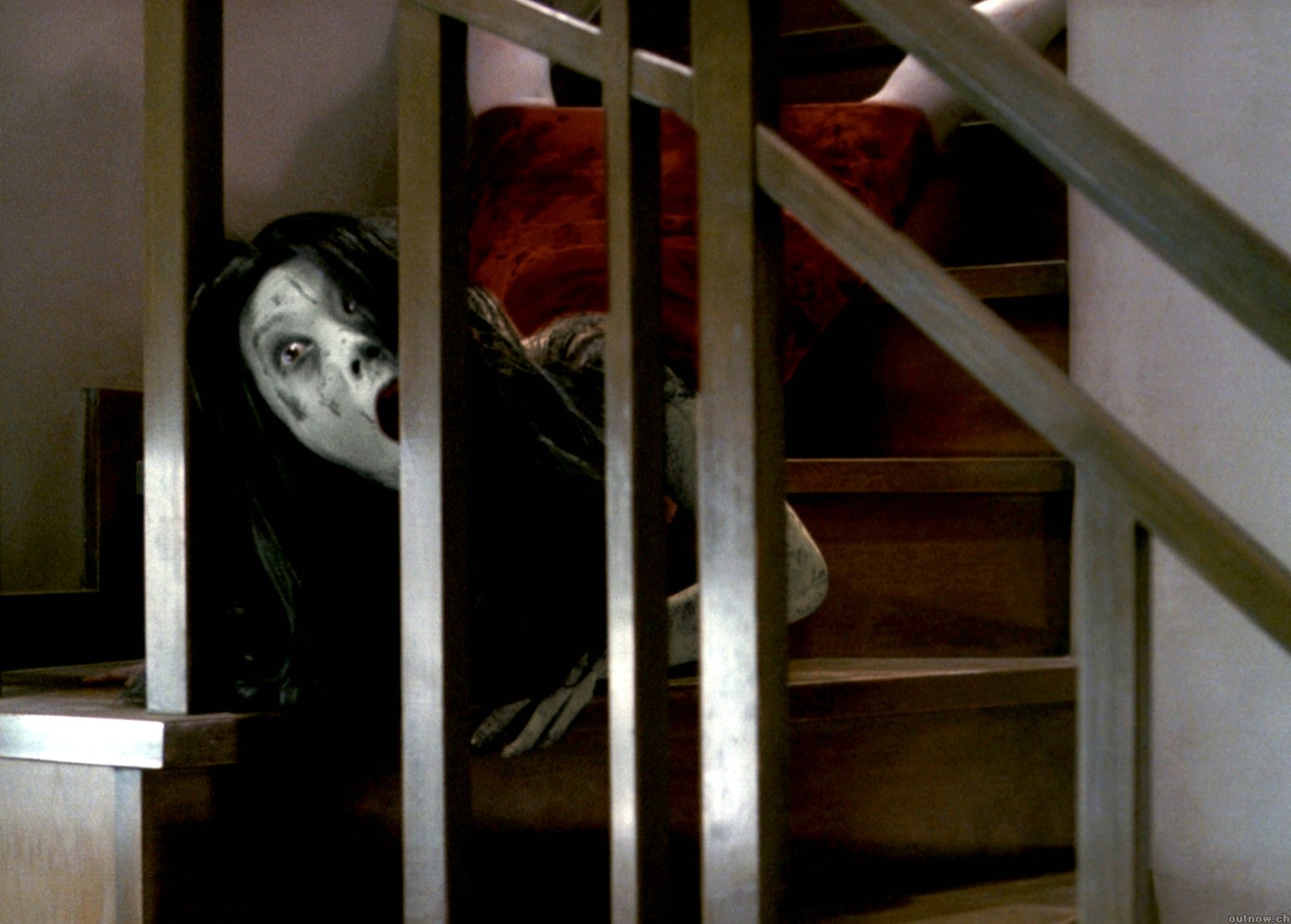There is now a German trailer available for THE SHOCK LABYRINTH, a new 3D J-Horror film from Takashi Shimizu, the director who gave us the JU-ON films and their first two American remakes, THE GRUDGE and THE GRUDGE 2. The storyline follows some friends trapped in a maze-like haunted house attraction, and it is based on/inspired by the real-life Labyrinth of Horrors at the Fuji-Q High Land amusment park, near Mount Fuji. Advance word has not been that great, but the trailer certainly looks interesting. No word yet on possible U.S. distribution.
In case you want to know what the German narration is saying, you can watch an English-language translation below. Unfortunately, the video resolution is much lower in this version of the trailer.
[serialposts]
Tag: Takashi Shimizu
Ju-on, The Grudge (2003) – Film & DVD Review
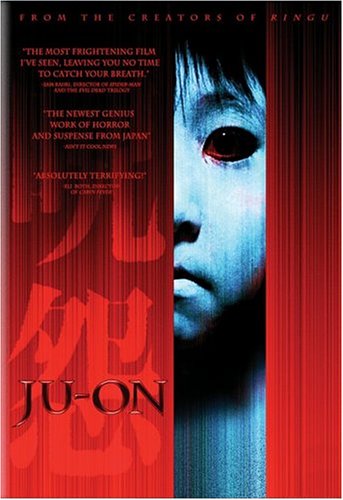 Recall your worst nightmares as a child: your fear of the dark, of being alone in bed at night, of shadows without substance lurking in corners, beneath the bed, outside your door, or in your closet. Remember the creaking floorboards, the rustle of wind or the moan of some animal – a cat, perhaps? – which led you to believe that you were no longer alone, that something tangible was there with you, about to manifest itself before your frightened senses. Now imagine this fear captured on celluloid and presented to you with all the evocative power of your childhood nightmares – only now the nightmare seems utterly convincing, because you know you are awake, and utterly inescapable, because it can follow you anywhere: in attics, down stairs, along corridors, through doors, even into that one place you felt absolutely safe as a child – beneath the bed covers. This is the essence of horror captured in JU-ON: THE GRUDGE, Continue reading “Ju-on, The Grudge (2003) – Film & DVD Review”
Recall your worst nightmares as a child: your fear of the dark, of being alone in bed at night, of shadows without substance lurking in corners, beneath the bed, outside your door, or in your closet. Remember the creaking floorboards, the rustle of wind or the moan of some animal – a cat, perhaps? – which led you to believe that you were no longer alone, that something tangible was there with you, about to manifest itself before your frightened senses. Now imagine this fear captured on celluloid and presented to you with all the evocative power of your childhood nightmares – only now the nightmare seems utterly convincing, because you know you are awake, and utterly inescapable, because it can follow you anywhere: in attics, down stairs, along corridors, through doors, even into that one place you felt absolutely safe as a child – beneath the bed covers. This is the essence of horror captured in JU-ON: THE GRUDGE, Continue reading “Ju-on, The Grudge (2003) – Film & DVD Review”
Horror Filmmakers & Authors Pick Their Favorite Horror Movies
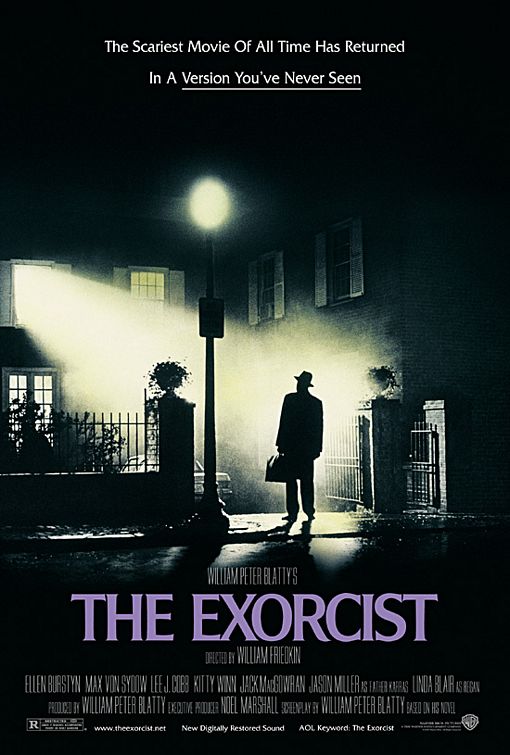 Last month, we ran a list of the American Film Institute’s nominees for the best Fantasy and Science-Fiction Films of all time. Many readers were angry over the exclusion of horror from the genres under consideration; some were unhappy about certain titles that made or did not make it onto the A.F.I.’s lists; a few were offended by our caustic comments about the more dubious inclusions. Well, we all have our favorites. Neither the A.F.I. nor Cinefantastique Online is the sole arbiter of what constitutes the best of the best in movie magic. Therefore, we thought it would be a good idea to present a gallery of expert opinions from people working behind the scenes. What films rank as favorites among industry insiders who made your favorite films? What films frightened or amazed the directors, writers, actors, and authors who make a living in the genres of science-fiction, fantasy, and horror? What films stirred their sense of wonder or made them want to make movies? You’ll find a sample of their answers below…
Last month, we ran a list of the American Film Institute’s nominees for the best Fantasy and Science-Fiction Films of all time. Many readers were angry over the exclusion of horror from the genres under consideration; some were unhappy about certain titles that made or did not make it onto the A.F.I.’s lists; a few were offended by our caustic comments about the more dubious inclusions. Well, we all have our favorites. Neither the A.F.I. nor Cinefantastique Online is the sole arbiter of what constitutes the best of the best in movie magic. Therefore, we thought it would be a good idea to present a gallery of expert opinions from people working behind the scenes. What films rank as favorites among industry insiders who made your favorite films? What films frightened or amazed the directors, writers, actors, and authors who make a living in the genres of science-fiction, fantasy, and horror? What films stirred their sense of wonder or made them want to make movies? You’ll find a sample of their answers below…
WILLIAM FRIEDKIN (Director of THE EXORCIST)
The horror films that I admire are ROSEMARY’S BABY, ALIEN, DIABOLIQUE, PSYCHO – that’s about it. I would say those are horror films, but they totally transcend the genre. They’re every bit as good as stories as horror films: the stories are believable; the characters are believable; the situations they’re put in, the style of performance, is believable. There’s also a Japanese film that I love called Onibaba, another wonderful film of fantasy and imagination, worked very carefully into a fairly realistic story. Whereas in something like Nightmare on Elm Street or Jason, it isn’t believable. There’s an automatic distance there—between what’s on the screen and the audience’s perception of real people in real situations.
I like THE BLAIR WITCH PROJECT. I applaud its ingenuity. It was something different, and it was pure to what it was—it did not break the focus. It was a documentary. When people set the camera down, all it showed you was shoes or sometimes nothing. I have to tell you, I sat there with my then fourteen-year-old son, and it scared the hell out of us. That picture scared me. I thought it was really good, because I love documentaries. I love that somebody took the horror genre, and did almost a pure documentary with it. I think Blair Witch is a helluva a film, a good film.
RIDLEY SCOTT (Director of ALIEN)
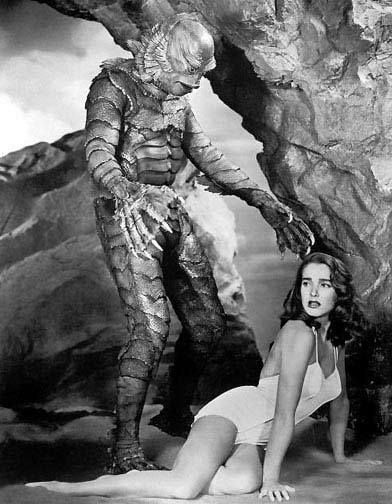 The thing I always worried about doing a monster movie—I was frightened that the monster wouldn’t be good, because they very rarely are. Probably the last great monster before that was the little girl in the bed in The Exorcist. But all you had to put on her was the voice—of Mercedes McCambridge—and that one trick was chilling. I decided to see THE CREATURE FROM THE BLACK LAGOON, THEM and IT [THE TERROR FROM BEYOND SPACE]—which actually were good fun at the time, used to scare the living daylights out of me as a kid, and now are kind of collector’s items. Funnily enough, as a child, I was always brought up not to see horror movies, because my parents classified them along with sex movies, so I wasn’t allowed to see them. I saw this poster in Piccadilly of this guy standing there with the face-mask on and the buzz saw, and I just decided not to see the film—that [The Texas Chainsaw Massacre ] was pretty tough stuff.
The thing I always worried about doing a monster movie—I was frightened that the monster wouldn’t be good, because they very rarely are. Probably the last great monster before that was the little girl in the bed in The Exorcist. But all you had to put on her was the voice—of Mercedes McCambridge—and that one trick was chilling. I decided to see THE CREATURE FROM THE BLACK LAGOON, THEM and IT [THE TERROR FROM BEYOND SPACE]—which actually were good fun at the time, used to scare the living daylights out of me as a kid, and now are kind of collector’s items. Funnily enough, as a child, I was always brought up not to see horror movies, because my parents classified them along with sex movies, so I wasn’t allowed to see them. I saw this poster in Piccadilly of this guy standing there with the face-mask on and the buzz saw, and I just decided not to see the film—that [The Texas Chainsaw Massacre ] was pretty tough stuff.
DIRECTOR GEORGE A ROMERO (Director of NIGHT OF THE LIVING DEAD and MARTIN)
Martin is my all-time favorite. When you make films, it’s hard to decide which among them is your favorite. When and if you make a choice, there are many factors that go into it—the experience, memories of the people working with you. On that film I had my first chance to work with Tom Savini, John Amplas. The crew numbered fifteen, including the cast. We had no money. A handful of people made it possible for me to make the movie. We made it on spit and a prayer. I think it’s my most successful effort, in that it comes closer than anything I’ve done to what I intended when I wrote the script. It turned out almost exactly the way I originally envisioned it.
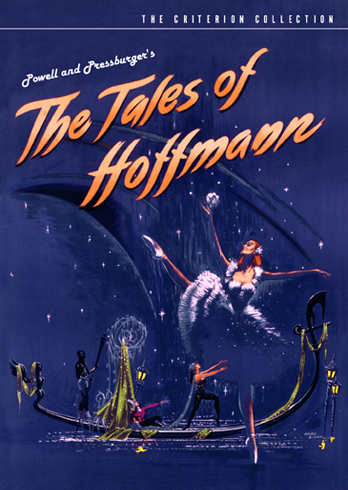 I read my share of Poe. I collected EC Comics, and I’m old enough to have seen FRANKENSTEIN and DRACULA on the big screen—when they were re-released. I’m not that old! I saw THE THING FROM ANOTHER WORLD in its first run, also on the big screen The movie that made me want to make movies is—you’ll probably be surprised by this—is The Tales of Hoffman, an adaptation of Orfenbach’s opera. It’s sung in English, but the words don’t matter much; it’s the imagery that grabs you, and it never lets go. I was one of the few who saw this particular film when it played in a theatre on a big screen and in color. The film has action and adventure, and it was way serious to an eleven year old. It was released in the same year as The Thing from Another World—big competition—but this film made more of an impression than James Arness ever could. I love some of Dario Argento’s early ones, Deep Red and The Bird with the Crystal Plumage. Those were probably my favorites, and Suspiria—it’s operatic and beautiful—like The Tales of Hoffman. Repulsion is the most frightening film that I’ve ever seen. Lapsed Catholics—not practicing Catholics, but those who have strayed—like me—stained our jockeys when we first saw The Exorcist. As far as I’m concerned, that is the only film that dealt with Pure Evil and managed to pull it off.
I read my share of Poe. I collected EC Comics, and I’m old enough to have seen FRANKENSTEIN and DRACULA on the big screen—when they were re-released. I’m not that old! I saw THE THING FROM ANOTHER WORLD in its first run, also on the big screen The movie that made me want to make movies is—you’ll probably be surprised by this—is The Tales of Hoffman, an adaptation of Orfenbach’s opera. It’s sung in English, but the words don’t matter much; it’s the imagery that grabs you, and it never lets go. I was one of the few who saw this particular film when it played in a theatre on a big screen and in color. The film has action and adventure, and it was way serious to an eleven year old. It was released in the same year as The Thing from Another World—big competition—but this film made more of an impression than James Arness ever could. I love some of Dario Argento’s early ones, Deep Red and The Bird with the Crystal Plumage. Those were probably my favorites, and Suspiria—it’s operatic and beautiful—like The Tales of Hoffman. Repulsion is the most frightening film that I’ve ever seen. Lapsed Catholics—not practicing Catholics, but those who have strayed—like me—stained our jockeys when we first saw The Exorcist. As far as I’m concerned, that is the only film that dealt with Pure Evil and managed to pull it off.
GUILLERMO DEL TORO (Director of PAN’S LABYRINTH)
My favorites of my own films are PAN’S LABYRINTH, THE DEVIL’S BACKBONE, and HELLBOY.
I started watching horror films without caring much about their origin. We got some Mario Bava films. Of course, we have the Mexican wrestler/masked avengers type of horror film. Then every Sunday there was a local channel that showed all the Universal monster movies: everything from the classics Frankenstein to Bride of Frankenstein and so forth. Then at the matinee, my mother took me to see the Hammer films: DRACULA, HORROR OF FRANKENSTEIN, all of them. So I really got every single thing on the spectrum fed into my brain at this very tender age.
TAKASHI SHIMIZU (Director of THE GRUDGE)
I am influenced by lots of filmmakers and movies, so it’s hard to name everything. I like art films like Decalogue and big-budget Hollywood movies like SPIDER-MAN 2, but I fell asleep in SPIDER-MAN. Sorry, Sam! (referring to SPIDER-MAN director Sam Raimi, who produced THE GRUDGE)
SCOTT DERRICKSON (Director of THE EXORCISM OF EMILY ROSE)
In cinema, you have to be crazy [to make an exorcism film] after THE EXORCIST. It’s my favorite horror film; I think it’s the best horror film ever made. You’re not going to make a better movie than that. People who tried to imitate that movie have pretty notoriously failed. It’s daunting.
ADAM GREEN (Writer-director of HATCHET, whose festival tag-line was: “It’s not a remake; it’s not a sequel; and it’s not based on a Japanese one.’)
In fact I like Japanese horror films, and some of my favorite films are remakes. John Carpenter’s THE THING is my Top Five of all time, and I love THE TEXAS CHAINSAW MASSACRE [remake] – as much as a lot of people would want to kill me for saying that. I wanted to hate that when I saw it, and I really liked it. Even the second time – because I thought, ‘Maybe it’s just Jessica Biel’s boobs,’ but it wasn’t; it was really that good.
HALLOWEEN to me is still [great] – nothing will ever touch that one. [Slasher films] created villains with great mythologies behind them that were very simple stories that you could easily explain to your friend while you’re lying on the floor in sleeping bags at night, having a sleepover. That was the real joy of these films for me. The villains were these anti-superheroes; they were just these total bad-asses. As much as you were afraid of them, you were kind of rooting for them because they were so cool.
WILLIAM MALONE (Director of THE HOUSE ON HAUNTED HILL)
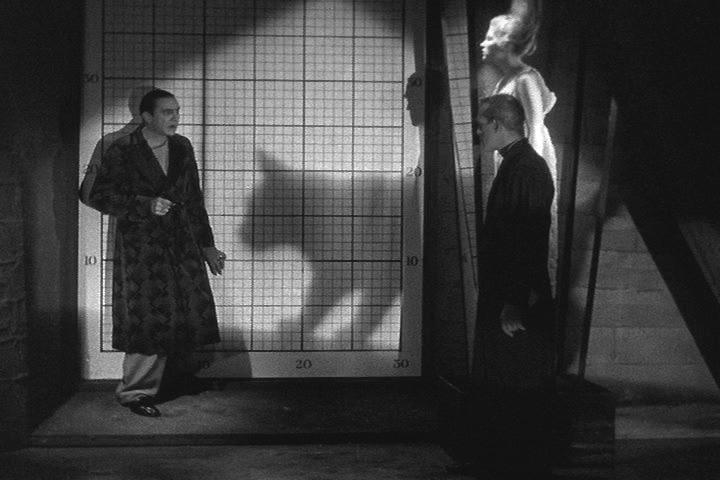 Of recent ilk, one of my favorites was ALIEN, which is just a brilliant movie. I still love CREATURE FROM THE BLACK LAGOON: there’s something evocative about it that really works. I love things like THE CABINET OF DR. CALIGARI and FRANKENSTEIN, which is a wonderful picture; the original still really holds up. MAD LOVE is a really cool movie, with Peter Lorre. And some other stuff has been overlooked like PLANET OF THE VAMPIRES, the Mario Bava picture, which I think is a wonderful film. I was heavily influenced by THE BLACK CAT [1934], which is one of my favorite films. I love that movie. When I first met Geoffrey [Rush, whom Malone directed in House], he’d just gone to see THE BLACK CAT, and he talked about how much he loved it. It’s got this perversity, this weird, dark undertone. What’s great about it is that you can’t put your finger on it, except if you actually look at the plot of that movie, you could never do that today. It’s too twisted: the fact that Karloff kills Lugosi’s wife and then keeps her body preserved in the basement, and then marries her daughter! I’m a big fan of [director Edgar G.] Ulmer’s work.
Of recent ilk, one of my favorites was ALIEN, which is just a brilliant movie. I still love CREATURE FROM THE BLACK LAGOON: there’s something evocative about it that really works. I love things like THE CABINET OF DR. CALIGARI and FRANKENSTEIN, which is a wonderful picture; the original still really holds up. MAD LOVE is a really cool movie, with Peter Lorre. And some other stuff has been overlooked like PLANET OF THE VAMPIRES, the Mario Bava picture, which I think is a wonderful film. I was heavily influenced by THE BLACK CAT [1934], which is one of my favorite films. I love that movie. When I first met Geoffrey [Rush, whom Malone directed in House], he’d just gone to see THE BLACK CAT, and he talked about how much he loved it. It’s got this perversity, this weird, dark undertone. What’s great about it is that you can’t put your finger on it, except if you actually look at the plot of that movie, you could never do that today. It’s too twisted: the fact that Karloff kills Lugosi’s wife and then keeps her body preserved in the basement, and then marries her daughter! I’m a big fan of [director Edgar G.] Ulmer’s work.
JEAN-PIERRE JEUNET (Director of ALIEN: RESURRECTION and AMALIE)
I love American Beauty, Memento, Happiness. I have two films in my life: A CLOCKWORK ORANGE from Stanley Kubrick and ONCE UPON A TIME IN THE WEST. I saw it when I was a teen, and I couldn’t eat or sleep for three days. My parents were, “What? What? Are you sick?” “No no, you can’t understand!”
MAZAAKI TEZUKA (Director of GODZILLA: TOKYO S.O.S.)
The first GODZILLA (1954) … [is] a masterpiece, but KING KONG VS. GODZILLA is my favorite.
ROLFE KANEFSKY (Writer-director of NIGHTMARE MAN)
I saw Frankenstein and all the monster movies when I was four years old, but I became a huge horror fan when I was fourteen, when I really started watching horror films and seeing all the conventions and the clichés. All the really good horror films were – except when the studios decided to stay out of it, like THE EXORCSIT – they were not studio films. They were independent films: HALLOWEEN, FRIDAY THE 13TH, A NIGHTMARE ON ELM STREET.
LEONARD WOLF (Author of Dracula: A Connoisseurs Guide)
I am very drawn, curiously enough, to the silent film, NOSFERATU (1922). When Count Orlock comes to—her name is either Nina or Ellen, depending on the subtitles—they exchange looks across the areaway. It is so charged with complex implications. Clearly, he is now going to be in the role of the demon lover, making love to a woman who sends her husband away—it’s got elements of French comedy in it. At the same time it’s a ghoulish moment, when this guy who’s not really living shows up in her bedroom and crouches at the side of her bed. You never know what they’re doing, but whatever they’re doing is so silent and so horrible and so Christian and so appalling—I’ve said somewhere in my book that the silence is intensified. We know we’re in a silent film, but somehow that scene takes on a terror because it’s so utterly still.
SUZY MCKEE CHARNAS (Author of The Vampire Tapestry)
I think that one thing that happens when you are raised as a reader rather than a visual consumer is that when you do go to films, they’re really pretty overwhelming. I remember being really impressed by silly things like ABBOTT AND COSTELLO MEET FRANKENSTEIN. It is wonderful, but it shouldn’t send you screaming! It did influence me, to put it mildly. For a very long time, the whole vampire thing was very tightly attached to the Hungarian actor whose name we all know. I still kind of balk when people get too far away from a basic sort of dignity. I don’t really go for BUFFY THE VAMPIRE SLAYER-type of vampires, and the punk rocker ones really turn me off.
BARBARA STEEL (Star of BLACK SUNDAY, a.k.a. Mask of the Demon)
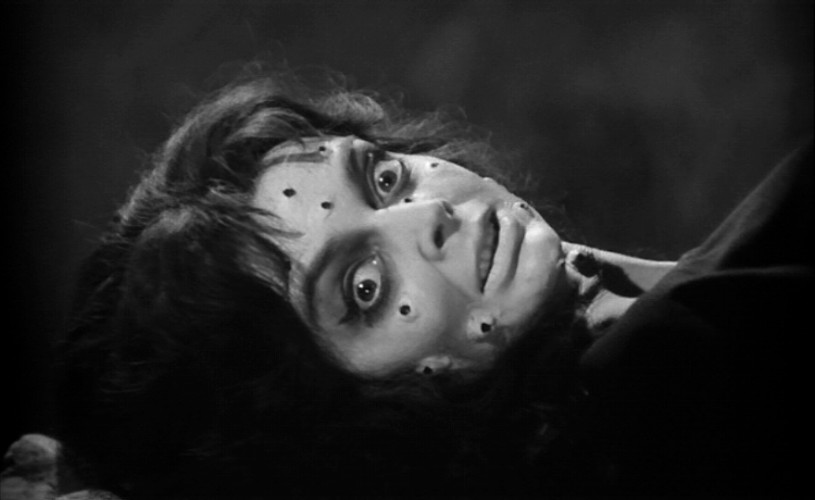 Black Sunday is the best of the genre films I made—the final result was most perfected in terms of the whole film, but I don’t feel it was best for me as an actress. I never saw a completed script for BLACK SUNDAY. We were given the pages day to day. We had hardly any idea of what was ever going down on that film. We had no idea of the end or the beginning, either. I’m sure he [director Mario Bava] had, or maybe he hadn’t. He really geared it to play out all his cinematographic-visual fantasies, and I think that one of the strongest points of the movie is the look of it. It’s just fortuitous for an actress to find herself in something that well structured.
Black Sunday is the best of the genre films I made—the final result was most perfected in terms of the whole film, but I don’t feel it was best for me as an actress. I never saw a completed script for BLACK SUNDAY. We were given the pages day to day. We had hardly any idea of what was ever going down on that film. We had no idea of the end or the beginning, either. I’m sure he [director Mario Bava] had, or maybe he hadn’t. He really geared it to play out all his cinematographic-visual fantasies, and I think that one of the strongest points of the movie is the look of it. It’s just fortuitous for an actress to find herself in something that well structured.
CHRISTINA RICCI (star of SLEEPY HOLLOW)
I’ve always loved [Tim Burton’s] movies. EDWARD SCISSORHANDS is one of my favorite movies of all time. His movies are so different. His movies are so beautiful and really elegant. They’re also told with such an innocence and a goodness. People say his movies are dark, but they’re really about Good and Evil, and the Good is always so good and so strong—they’re actually really sweet stories.
PATRICK MACNEE (Star of THE HOWLING)
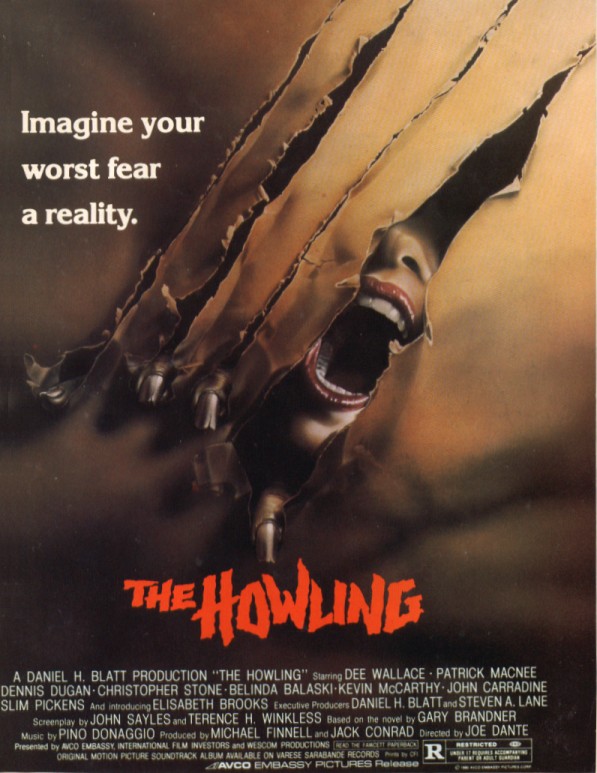 You just can’t get a more stunning film. My darling wife and my friends sat there watching it like that [grips the armrest of his chair and forms his mouth into a silent scream to demonstrate]. It’s a wonderful, wonderful film. Now all my other films— THE CREATURE WASN’T NICE, LOBSTER MAN FROM MARS —I have been in more movies of that type. I’m not saying we weren’t good in them, but they were movies you never see again, hopefully. When Dennis Bartok [of American Cinematheque] said, ‘We’re going to do a retrospective of your movies,’ I said, ‘Which one? There’s only one worth seeing, and this is it!’
You just can’t get a more stunning film. My darling wife and my friends sat there watching it like that [grips the armrest of his chair and forms his mouth into a silent scream to demonstrate]. It’s a wonderful, wonderful film. Now all my other films— THE CREATURE WASN’T NICE, LOBSTER MAN FROM MARS —I have been in more movies of that type. I’m not saying we weren’t good in them, but they were movies you never see again, hopefully. When Dennis Bartok [of American Cinematheque] said, ‘We’re going to do a retrospective of your movies,’ I said, ‘Which one? There’s only one worth seeing, and this is it!’
JOE DANTE (Director of THE HOWLING)
There are too many monster movies for me to pick. I spent a misspent youth watching monster movies, and then I spent a misspent adulthood making them. So I would refer you to any list of decent monster movies, and I’m sure my favorites will be on there.
Marebito (2004) – J-Horror Film Review
 This 2004 effort from director Takashi Shimizu (filmed in eight days, between the fourth JU-ON film and the American remake THE GRUDGE) is not up to his usual standard, but it is an oddball effort that is in some ways even more experimental than his previous work. Shimizu’s JU-ON series rather boldly experimented with structure to good effect, tossing out conventional narrative in favor of a puzzle-like mosaic of episodes, but he always offered easy audience identification with the helpless victims. This time, working from a script he did not write, the director abandons even this connection to the audience, pushing his film even further into unconventional territory. It is far from a completely successful experiment, but it does create something with a unique enough identity to be worth exploring. Continue reading “Marebito (2004) – J-Horror Film Review”
This 2004 effort from director Takashi Shimizu (filmed in eight days, between the fourth JU-ON film and the American remake THE GRUDGE) is not up to his usual standard, but it is an oddball effort that is in some ways even more experimental than his previous work. Shimizu’s JU-ON series rather boldly experimented with structure to good effect, tossing out conventional narrative in favor of a puzzle-like mosaic of episodes, but he always offered easy audience identification with the helpless victims. This time, working from a script he did not write, the director abandons even this connection to the audience, pushing his film even further into unconventional territory. It is far from a completely successful experiment, but it does create something with a unique enough identity to be worth exploring. Continue reading “Marebito (2004) – J-Horror Film Review”
Film Interview: Takashi Shimizu on Holding a Grudge
 “IT NEVER FORGIVES. IT NEVER FORGETS.”
“IT NEVER FORGIVES. IT NEVER FORGETS.”
That’s the tag-line for THE GRUDGE, the horror film starring Sarah Michelle Gellar as an American social worker in Tokyo who is exposed to a mysterious curse that spreads like a virus as it claims new victims. What many mainstream Western audiences may not realize is that THE GRUDGE is based on an excellent series of Japanese horror films that have revitalized the genre with a kind of intensity seldom seen on the movie screen. The four previous films that make up the “Grudge” series (titled “Ju-On” in Japanese) are filled with a barrage of imagery that is nightmarish, surreal, and at times confusing, but the style should not be completely unfamiliar to non-Japanese viewers. Some of supernatural manifestations (female ghosts with long, dark scraggly hair obscuring their faces) are reminiscent of the 1998 Japanese horror hit Ring, which was remade in American in 2002 as The Ring. The Ju-On films up the ante, however; whereas Ring featured a strong narrative, laced with unseen menace, that built slowly to its terrifying climax, Ju-On and its sequels eschew traditional plot structure in favor of an episodic approach that shifts point of view as each new character comes in contact with the “curse” that will doom them. With no clearly identified protagonist, the films spend little time on characterization and back story; the running time is devoted almost totally to staging the hauntings. Continue reading “Film Interview: Takashi Shimizu on Holding a Grudge”
The Grudge (2004) – DVD Review
 A worthy remake of the Japanese original, this remakes stands on its own as an excellent frightfest.
A worthy remake of the Japanese original, this remakes stands on its own as an excellent frightfest.
Like THE RING (2002), this is an American remake of a Japanese horror hit. Unlike THE RING, this film retains the Japanese setting, director, and even some of the supporting cast. The result is a film that is closer in flavor to the original, while still different enough to stand on its own as an excellent achievement in the horror genre.
Officially, THE GRUDGE is based on the third of four Japanese horror films called JU-ON, but it actually incorporates scenes and ideas from all of the series. The first two, JU-ON and were released on video; their success led to two theatrical films, called (to help avoid confusion with their direct-to-video progenitors) JU-ON: THE GRUDGE and JU-ON: THE GRUDGE 2. The first half of the American remake sticks fairly closely to JU-ON: THE GRUDGE, but some of the original’s time-line has been straightened out, and new scenes have been added, along with elements like the ghost girl with the missing jawbone from the first DTV film.
Fans of the Japanese originals may wonder how the American version stacks up, so it’s pleasing to report that it is a worthy addition to the cannon, sort of a distillation of all that came before, rather than an outright remake. In fact, THE GRUDGE replicates so many scenes so closely that one credited screenwriter Steven Susco’s contribution sometimes seems to consist mostly of writing English-language dialogue. To be fair, there are at least half a dozen new sequences, and some of the familiar scenes do play out slightly differently, so not everything is a completely predictable rehash. (Susco also wrote numerous exposition scenes that were dropped in editing.)
In this regard, director Takashi Shimizu is following in the tradition he established when writing and directing the JU-ON films: like Sam Raimi�s EVIL DEAD trilogy, the JU-ON sequels frequently recreated elements from the previous films in the series. In a sense, none of them is a true sequel; all of them are like stand-alone semi-remakes, and the same is true of THE GRUDGE — which recreates many favorite moments for the benefit of American audiences who would not want to sit through a subtitled Japanese film.
There differences between THE GRUDGE and the JU-ON: THE GRUDGE is mostly a matter of emphasis. The lead characters are now American, and the film does a good job of portraying their culture shock at finding themselves in a foreign country where they do not speak the language, creating a sense of unease and discomfort even before the supernatural intrudes. The episodic story structure remains, but there has been some attempt to make the jumps back and forth in time more clear to the audience. There are no longer any “chapter subtitles” introducing the name of the character who will be the focus of each episode; instead, the film tries to create the illusion that we are watching one seamless plot.
To this end, Sarah Michelle Gellar’s social worker character is threaded throughout the film than was her Japanese counterpart in Reiko in JU-ON: THE GRUDGE, creating the impression that she is the film’s protagonist, even though she mostly just acts as our eyes and ears, discovering little bits of information and turning up background exposition that help to explain what’s happening to the audience.
In short, those expecting Buffy the Japanese Ghost Slayer were disappointed. And that’s a good thing, because the point of THE GRUDGE (like its predecessors) is to create a supernatural curse that allows for no safe harbor. Once you come in contact with it, you’re doomed; the only question is when and where the curse will manifest itself. This sense of approaching inevitable dread is what made all the JU-ON films so effective, so it’s nice to see that element retained.
There are a few minor missteps. A few fleeting CGI shots are okay, but they lack the uncanny quality that Shimizu brings to his live-action manifestations of the “Grudge.” There are more “jump-type” scares, underlined by a “sting” from the soundtrack. This kind of simple shock technique undermines the real virtue of Shimizu’s approach, which is based largely on anticipation and visualizations of weird, inexplicable phenomena — the ind of thing that not only makes you jump out of your seat but also gives you nightmares after you leave the theatre.
The attempts at characterization are mostly irrelevant to the thrust of the film (which is all-out terror). These scenes may make the actors feel as if they have something interesting to do, but they do not enhance the story; if anything, they slow down the pace in the early scenes. (All of the JU-ON films move from scare scene to scare scene with an admirably smooth simplicity, maintaining a high level of tension without ever seeming monotonous.) Because of this, some of the momentum and suspense are muted, but thankfully things pick up as the film proceeds.
The American version does have its virtues. The larger budget allowed for elaborate sets (the Japanese films were shot mostly on locations that limited camera angles and movement), and some of the shots have been rethought and improved; in particular, the uncanny elevator ride, in which the ghostly Toshio (Yuya Ozeki) is seen on every floor, is now accomplished in a single, uninterrupted take, instead of being fudged together in the editing. There is a fine score by Christopher Young that (mostly) emphasizes dread rather than shock. And the stereophonic soundtrack mix is excellent, using whisperings, cat cries, the padded sound of the little ghost boy’s running feet, and of course his mother Kayako’s creaking voice — all to send shivers down your spine.
Adding up the pros and the cons, THE GRUDGE is not quite a match for JU-ON: THE GRUDGE, which deserves a place in the pantheon of all-time great horror films. But THE GRUDGE works much better as an American translation than THE RING, recreating and occasionally improving upon some of the most memorable moments of the original. Fans of the Japanese films should be satisfied at another chance to enjoy director Takashi Shimizu’s style of horror. Viewers unfamiliar with the JU-ON series will no doubt enjoy the film even more.
THEATRICAL CUT DVD
The original DVD release of THE GRUDGE featured the theatrical cut of the film, which was slightly trimmed to earn a PG-13 rating (some shots during a bathtub drowning scene were removed to placate the Motion Picture Association of America, which objected to the suggestion of “child endangerment”).
The DVD’s bonus features included a theatrical trailer, an audio commentary, a five-part making-of documentary entitled “A Powerful Rage,” and a featurette called “Under the Skin.”
“A Powerful Rage” consists mostly of press junket-type video interviews of the cast and crew extolling the virtues of the film. It gets off to a weak start with voice-over commentary by Sam Raimi discussing the original Japanese-language film JU-ON: THE GRUDGE while we see footage only of the Americanized remake. Overall, the emphasis is on light-hearted anecdotes from the American cast (talking about how much they enjoyed filming in Japan). The few comments from director Takashi Shimizu are not very enlightening, and there is almost no discussion of the techniques used to make the ghostly appearances of Kayako and Toshio so disturbingly effective.
“Under the Skin” features talking-head comments from PhD. Joseph Ledoux discussing fear response in humans and how horror films can trigger that response. Footage from THE GRUDGE is intercut to illustrate the points he is making, but he never specifically tailors his comments to the film, and he never focuses on what should be an essential point: why do some films like THE GRUDGE succeed at triggering these fear response while others fail?
The audio commentary is a bit crowded, featuring eight members of the cast and crew: actors Sarah Michelle Gellar, Jason Behr, Clea DuVall, Kaydee Strickland, and Ted Raimi; screenwriter Stephen Susco; and producers Sam Raimi and Robert Tapert. Unfortunately, some of them seem farther away from the microphone and, therefore, are more difficult to hear, so you may find yourself riding the volume button on your remote control.
The overall feeling is of a bunch of friends chattering while a film plays in the background, with lots of chuckling and irrelevant patter about what went on behind the scenes (often repeating anecdotes already related in “A Powerful Rage”). For instance, much time is spent describing a purification ritual performed before filming started, in which Behr tries to pinpoint the exact sequence of bows, chants, etc.
Still, some of the commentary is amusing, as when Ted Raimi relates tales of being yelled at by the director for trying to get in a last bite of his lunch while the camera was rolling. Gellar describes the experience of filming on location without extras: all the people in the crowd scenes are just regular people going about their business; and unlike in America, they ignore the camera filming the actors. Sam Raimi explains that the decision was made to keep the remake in Japan in order to maintain the flavor of the original JU-ON films. And mention is made that the main house set of THE GRUDGE (unlike JU-ON, which was filmed in a real apartment) was built on the Toho soundstages, where films as diverse as Godzilla and THE SEVEN SAMURAI were made.
Raimi mentions the “Director’s Cut” DVD release, which includes footage missing from the theatrical version. (He even chuckles, imaging the reaction of viewers, who have just shelled out money the theatrical cut on DVD, upon learning of a more complete version.) His description of the differences is that the director’s cut contains about three minutes of additional footage (including trimmed footage from the bathtub drowning), but the running time is almost the same because other scenes have been deleted (as an example, he erroneously cites the rooftop dialogue between Gellar’s character and the Japanese police detective, which was inserted for the benefit of American viewers who needed more explanation for how the supernatural “Grudge” worked).
DIRECTOR’S CUT DVD
The director’s cut DVD features an extended, unrated version of the film (with some scenes slightly re-ordered); an audio commentary with director Takashi Shimizu, producer Taka Ichise, and actress Takako Fuji (who plays Kayako); fifteen deleted scenes with optional commentary; two short films by Shimizu; video diaries by Sarah Michelle Gellar and KaDee Strickland; production design sketches, storyboards, and a video tour of the haunted Saeki house.
The unrated cut is superior without being much bloodier; in fact, it’s sad to imagine that the film had to be cut at all. The few gory moments (a severed jawbone and later the ghostly Yoko minus her jaw) are held for several frames longer so that viewers can see what they are looking at, and there is more footage of Kayako’s corpse when Peter (Bill Pullman) discovers it.
More significantly, near the end, when the Sarah Michelle Gellar character is searching through the haunted house, you see the dead father hanging from the ceiling while Toshio pushes him like a swing, making his feet bang against the wall. (That’s the knocking sound you hear in the theatrical cut that leads her to find the body, but in the PG-13 version you didn’t see why the body was swinging.) This leads to longer flashback of the murders of Kayako and Toshio, which is much more grim and effective.
The disc also includes numerous deleted scenes. Some are mere vignettes connecting scenes in the film: for example more shots of Gellar’s social worker cleaning up for the old lady before she realizes something is wrong in the house (on the option audio commentary, Shimizu complains that his characters are always cleaning). Other scenes are pointless attempts by the American screenwriter (working at the behest of the producers) to explain each and every little detail, as if tying up the loose threads were an absolute necessity; fortunately, saner reasoning prevailed in the editing room.
There are also some pointless “dramatic” scenes, wherein Gellar and her boyfriend argue about what she saw in the haunted house. As director Takashi Shimizu rightly points out in his audio commentary, the scenes serve no purpose because they do not resolve anything: they begin and end with the characters in the same state of mind — her believing she saw a ghost, him believing she was mistaken.
There is one scene (of Kadee Strickland’s character finding her brother acting weird after an encounter with Toshio) that fans of the original Japanese film JU-ON: THE GRUDGE will recognize. And there is also an interesting alternate ending that leaves the film with a dreamy, almost unresolved feel. But the most interesting deleted scene is the death of Yoko, which was originally supposed to take place later in the film (after her jawbone is discovered in the attic). This sequence is not so much a longer version of what is in the finished film as an almost completely different version, using different camera angles and action, including a Steadicam shot that swoops in on her when she pokes her head up into the attic.
The audio commentary is very jokey: Shimizu says he wanted the famous Columbia Pictures’ logo to grow brunette hair and crawl down off her pedestal like Kayako; at other times he and producer Ichise wander off into speculation on whether all the extras in the haunted house will die off-screen, or they do an extended riff on what some characters in the background might be saying to each other (“When you see it over and over in editing,” Shimizu apologizes, “your mind starts to wander.”) Throughout, Ichise seems to take particular fun in needling actress Fuji, suggesting that she will be replaced by CGI in any sequel.
Shimizu never really discusses the techniques he used to achieve his frightening effects; instead, he focuses on pressure from U.S. producers to add more CGI effects and more exposition that would explain the plot to American audiences. At one point he expresses his pleasure at being able to use the audio commentary to say, “I told you so” to the producers, pointing out that the film would have run 160 minutes if all the new scenes had been included, prompting Ichise to warn him, “You’ll never work in this town again!”
Shimizu reveals that the American producers were concerned about his tendency to improvise on the set, urging him to stick to the script. He also had to change some details from his original film, such as allowing a security guard to live, in order to abide by the “rules” of the Grudge: that is, only people who enter the “cursed” house die. “I compromised on that because it had to have certain rules for America,” he says. “They may not accept randomness.”
The director also points out numerous differences between THE GRUDGE and the Japanese original JU-ON: THE GRUDGE, such as the fact that the studio built sets allowed him to achieve camera angles that were impossible on cramped locations (like shooting from inside the closet). It’s also interesting to note that Japanese audiences felt the American remake captured the culture shock of Americans living in Japan.
Some amusing anecdotes emerge: the Yuya Ozeki, the young actor who has played Toshio in four films, skipped the GRUDGE premier because he is now old enough to understand the plot and get frightened.
And Shimizu confirms that Strickland’s taxi ride is an homage to a similar scene with Jessica Harper in Dario Argento’s SUSPIRIA. Unfortunately, the subtitles for the audio commentary misspell the title phonetically and (apparently unaware that it is a title) also fails to capitalize the word.
Of the two video diaries, Strickland’s is the more interesting. Gellar’s is a mildly amusing account of a day on the set (the director arrives late, and there are communication problems because of the language barrier — ha! ha!). Strickland, on the other hand, takes us on a fascinating tour of Tokyo, and it is fair to say that be the time her short film is over, you will want to visit the metropolis yourself.
But the most interesting bonus films on the DVD are two short subjects that Shimizu made before the first JU-ON. Shot on video, they are not really complete stories; they are more like brief, spooky vignettes design to demonstrate the techniques he would use to make his feature-length film. “4444444444” shows a slightly older-looking proto-type of the Toshio character. “In a Corner,” set outside in daylight, showcases the unmistakable “Kayako-crawl” as she approaches a helpless victim. Shot on video, both are fairly effective, very brief “stingers.”
Overall, the amount of extra footage and bonus features on the unrated DVD is barely enough to justify a separate release. (Surely, it would have been possible to combine both versions into a two-disc set?) Of the two, the unrated DVD is far preferable, with a superior cut of the film and a more insightful audio commentary, plus more interesting bonus features. Even the deleted scenes, while seldom exciting in themselves, provide a revealing look at what the U.S. producers were trying to do to “Americanize” the movie. In effect, this version of the film pretty much renders the theatrical cut obsolete.
THE GRUDGE (2004). Directed by Takashi Shimizu. Screenplay by Stepyhen Susco, baased on “Ju-On: The Grudge,” written & directed by Shimizu. Starring: Sarah Michelle Gellar, Jason Behr, Bill Pullman, Clea Duval, Yuya Ozeki, Takako Fuji.
RELATED ARTICLES: The Grudge 2
Friday Cat Blogging: Ju-On – The Grudge
Black cats sure get a bum rap on screen — always cast as the bad guys (or at least their familiars). This is not just a Western prejudice. For example, spooky black cats feature quite prominently in the Japanese horror hit JU-ON: THE GRUDGE, as in this scene wherein social worker Rika awakens to find some uninvited feline guests sharing her bed…

The cats appear to be multiples of the pet owned by the film’s little ghost boy, Toshio, when he was alive. The shot works exceedingly well in theatres, where it flashes by so fast that you have time only to be overwhelmed by the creepy impression it leaves. On DVD, it is slightly less effective, because the Pause and Rewind buttons allow you to determine that many of the “cats” are actually statues (although since they’re supposed to be ghost cats, one could charitably assume that standing perfectly frozen like a statue is just one of the ways they manifest themselves). Continue reading “Friday Cat Blogging: Ju-On – The Grudge”
The Grudge 2 (2006) – Film & DVD Review
 Though not nearly so ridiculous as THE HERETIC: THE EXORCIST II, nor quite so badly misguided as BABE: PIG IN THE CITY, this stands as one of the most disappointing sequels to a major blockbuster success ever made . The spooky stylization that worked so well in THE GRUDGE is carelessly recycled, chained to a pointless plot that twists together several story-lines without weaving them into a coherent thread, let alone a seamless tapestry. With no new interesting story to tell, few if any worthwhile revelations, and only a handful of decent scary moments, THE GRUDGE 2 is dull affair that, perversely, seems deliberately designed to take a successful formula and reduce it to the level of a direct-to-video franchise knock-off.
Though not nearly so ridiculous as THE HERETIC: THE EXORCIST II, nor quite so badly misguided as BABE: PIG IN THE CITY, this stands as one of the most disappointing sequels to a major blockbuster success ever made . The spooky stylization that worked so well in THE GRUDGE is carelessly recycled, chained to a pointless plot that twists together several story-lines without weaving them into a coherent thread, let alone a seamless tapestry. With no new interesting story to tell, few if any worthwhile revelations, and only a handful of decent scary moments, THE GRUDGE 2 is dull affair that, perversely, seems deliberately designed to take a successful formula and reduce it to the level of a direct-to-video franchise knock-off.
Amber Tamblyn takes the lead role of Aubrey Davis, who is the sister of Karen, the character played by Sarah Michelle Gellar in the first previous film. Her mother (Joanna Cassidy) sends Aubrey to Japan to track down Karen, but the family reunion is brief, ending with Karen’s fall off the top of a hospital building. Aubrey tries to unravel the mystery of what drove Karen to her death. Meanwhile the film intercuts other seemingly unrelated stories: one about another girl who encounters the lethal “grudge,” the other showing a famiy back in the U.S. that seems to be haunted by the “Grudge” at a later date. Continue reading “The Grudge 2 (2006) – Film & DVD Review”
